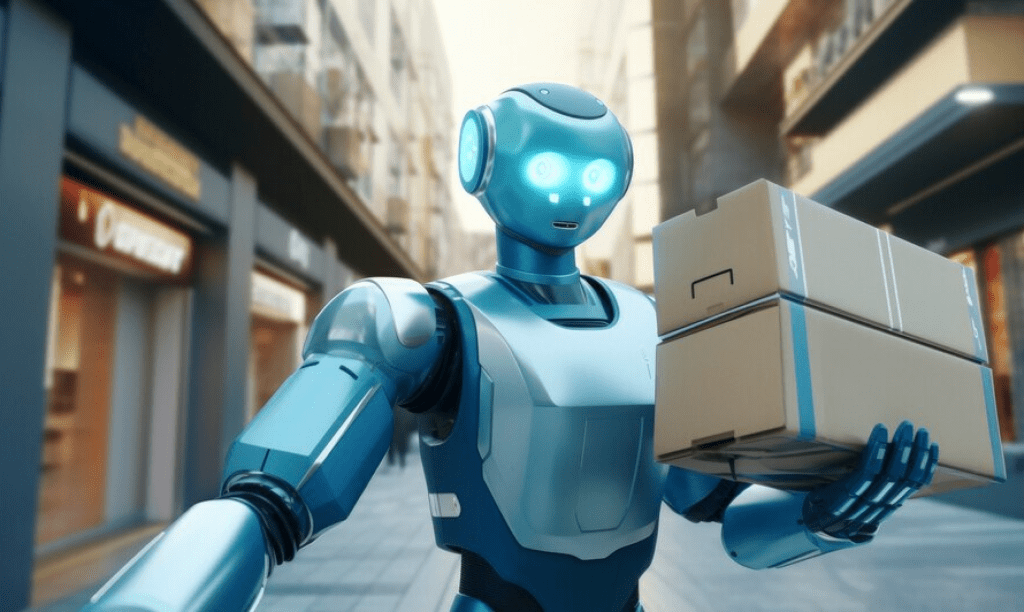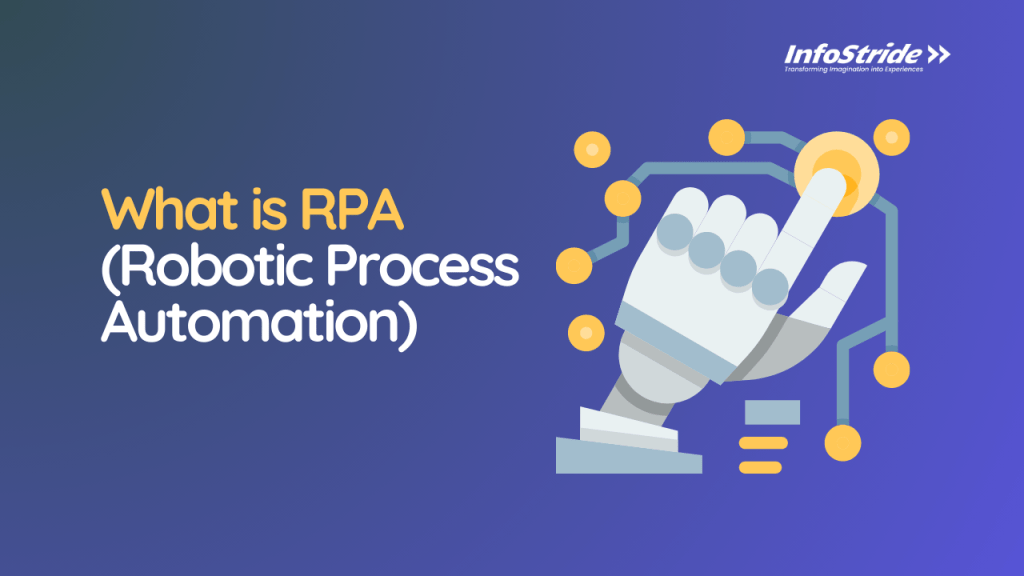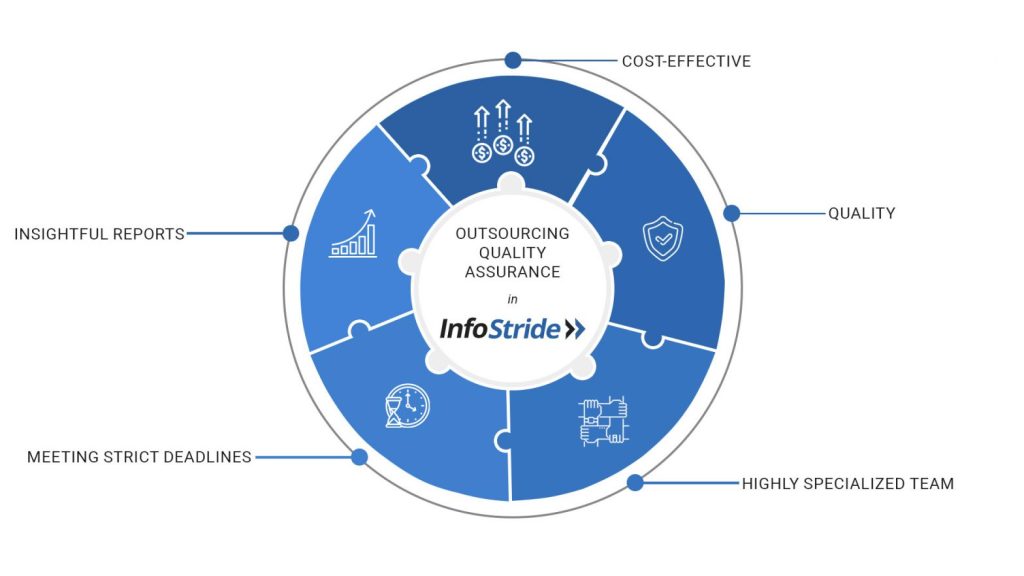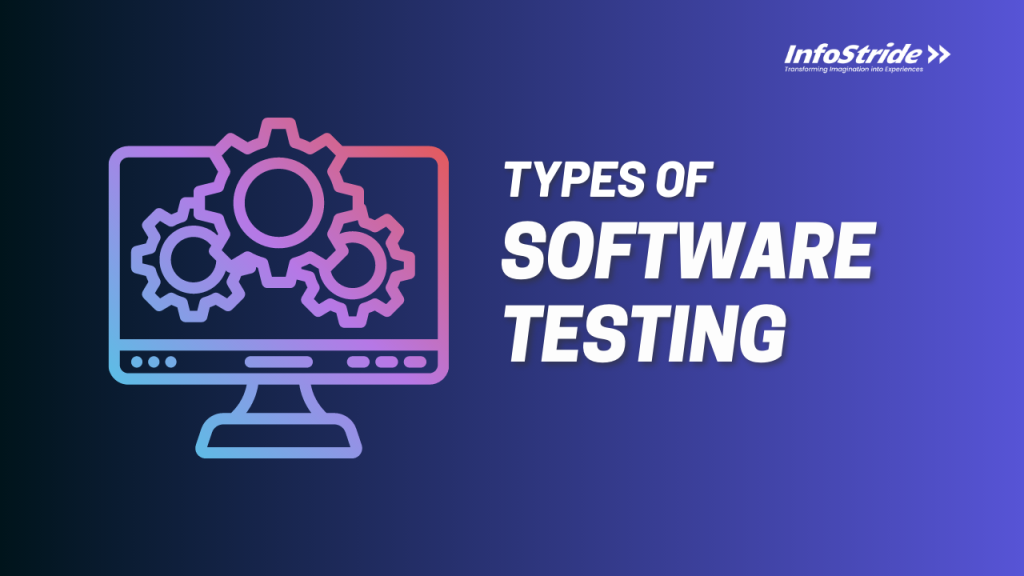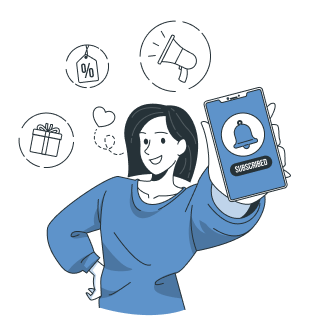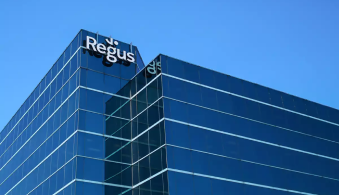Table of Content
The Rise of Online Food Delivery Services
Integrating AI in Food Delivery Apps: Innovations to Create a Food Delivery App
Other Popular Advances in Online Food Ordering and Delivery Services
Case Studies of Businesses Leveraging AI to Improve Various Aspects of the Delivery Process
Innovative Features to Create Your Food Delivery App: Highlights from Leading Apps in 2024
Steps To Create Your Own Food Delivery App in 2024
Future Trends and Predictions in Online Food Delivery
With the rising demand for online food delivery services (projected to reach $1.3 trillion by 2032), the initiative to create a food delivery app has gained wider currency among entrepreneurs and business owners. Leveraging the accessibility of mobile technology, aspiring entrepreneurs are tapping into this trend, strategically navigating the competitive landscape to carve out their niche. Whether through optimizing AI algorithms for personalized recommendations or refining delivery logistics for efficiency, developing a food delivery app offers abundant opportunities for innovation and growth.
In this blog post, we’ll delve into the pivotal role of AI in transforming the online food delivery industry. We’ll explore recent innovations by businesses, leveraging AI to enrich the ordering and delivery experience for consumers. From predictive ordering and dynamic pricing to exploring drone deliveries and autonomous vehicles, we’ll discuss the cutting-edge technologies shaping the future of food delivery. Whether you’re a business owner venturing into food delivery app development or a consumer eager to stay updated on the latest trends, this blog post promises valuable insights into the evolving landscape of online food delivery in 2024 and beyond.
The Rise of Online Food Delivery Services
Gone are the days of waiting in long lines or making countless phone calls to place a food order. With the advent of online food delivery platforms, ordering food has become as simple as a few taps on a smartphone screen. This shift in consumer behavior has been fueled by the increasing demand for convenience in today’s fast-paced world.
From household names like Uber Eats and DoorDash to regional players and niche startups, the online food delivery market has witnessed explosive growth, attracting billions in investments and reshaping the way we dine. The sheer variety of cuisines and restaurants available at our fingertips has empowered consumers with unprecedented choice and flexibility. As the industry continues to evolve, the importance of reliable and innovative food delivery app development services becomes increasingly apparent.
Integrating AI in Food Delivery Apps: Innovations to Create a Food Delivery App
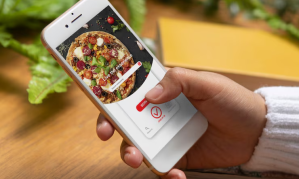
Central to the evolution of online food delivery is the integration of cutting-edge AI technology into delivery apps. Artificial intelligence has revolutionized every aspect of the food delivery process, from order placement to delivery logistics.
AI-powered algorithms analyze vast amounts of data, enabling food delivery apps to offer personalized recommendations based on user preferences, past orders, and even contextual factors like weather and time of day. This level of personalization not only enhances the user experience but also drives customer satisfaction and loyalty.
Furthermore, AI is being leveraged to optimize delivery routes, minimize wait times, and ensure the timely and efficient delivery of orders. Predictive analytics algorithms anticipate demand patterns, enabling restaurants and delivery drivers to better allocate resources and streamline operations.
Other Popular Advances in Online Food Ordering and Delivery Services
Beyond AI, the online food ordering and delivery industry have witnessed a myriad of other advancements aimed at improving customer experience and operational efficiency.
One notable advancement is the integration of voice-enabled ordering systems, allowing customers to place orders using voice commands through virtual assistants like Amazon’s Alexa or Google Assistant. This hands-free approach streamlines the ordering process and enhances accessibility for users, especially those with disabilities or limited mobility.
Furthermore, the adoption of augmented reality (AR) and virtual reality (VR) technologies is gaining traction in creating food delivery apps. Some apps now offer AR-powered menus, allowing customers to visualize menu items in 3D before placing their orders. This immersive experience not only enhances the customer’s decision-making process but also creates a more engaging and interactive ordering experience.
Additionally, advancements in delivery tracking systems, including real-time GPS tracking and notifications, have improved transparency and communication between customers and delivery drivers. Customers can now track their orders in real-time and receive updates on the status of their deliveries, reducing anxiety and uncertainty.
These advancements, combined with AI-driven recommendation systems, are revolutionizing on demand food delivery app development, offering unparalleled convenience and personalized experiences for consumers.
Case Studies of Businesses Leveraging AI to Improve Various Aspects of the Delivery Process
Several businesses have successfully leveraged AI in the food industry to optimize different aspects of the delivery process, resulting in improved efficiency, cost savings, and customer satisfaction.
One such case study is Domino’s Pizza, which has implemented AI-powered chatbots to handle customer inquiries and support requests. These chatbots utilize natural language processing (NLP) algorithms to understand and respond to customer queries in real-time, reducing the need for human intervention and improving response times.
Another example is the use of AI-driven predictive analytics by delivery logistics companies like UPS and FedEx. By analyzing historical data and external factors such as traffic patterns and weather conditions, these companies can optimize delivery routes, predict delivery times more accurately, and minimize delays.
Furthermore, food delivery platforms like Grubhub and Just Eat have implemented AI-powered fraud detection systems to prevent fraudulent transactions and protect both customers and restaurants. These systems analyze transaction data in real-time, flagging suspicious activity and mitigating potential risks.
It’s quite evident that the integration of AI technology in various facets of food delivery app development exemplifies the industry’s commitment to innovation, efficiency, and the enhancement of customer experiences.
Innovative Features to Create Your Food Delivery App: Highlights from Leading Apps in 2024
In 2024, leading food delivery apps are pushing the boundaries of innovation with a range of new features and functionalities powered by AI and other emerging technologies.
One such feature is real-time order tracking with augmented reality (AR) overlays. Customers can track their delivery drivers’ progress in real-time through an AR interface, providing live updates on the status of their orders and estimated arrival times. This transparency not only enhances the customer experience but also reduces anxiety and uncertainty associated with waiting for deliveries.
Additionally, some apps are experimenting with autonomous delivery vehicles, such as drones and self-driving robots, to fulfill orders quickly and efficiently. These vehicles can navigate through traffic and crowded urban environments autonomously, delivering orders directly to customers’ doorsteps within minutes.
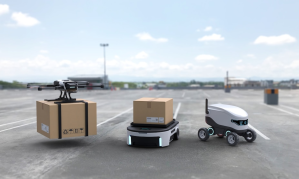
Moreover, leading food delivery apps are investing heavily in AI-driven sustainability initiatives to reduce their carbon footprint and promote environmentally friendly practices. This includes optimizing delivery routes to minimize fuel consumption, partnering with eco-friendly packaging suppliers, and incentivizing customers to choose eco-friendly delivery options.
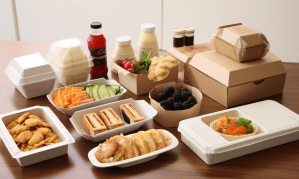
Overall, these innovative features demonstrate the commitment of leading food delivery apps to leveraging AI and other advanced technologies to enhance the ordering and delivery experience for customers while driving operational efficiency and sustainability.
Steps To Create Your Own Food Delivery App in 2024
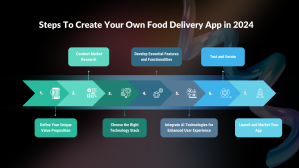
In today’s digital age, creating your own food delivery app can be an exciting venture, especially considering the growing demand for convenient food ordering and delivery services. Here’s a step-by-step guide to help you navigate the food delivery app development process in the current landscape.
1. Define Your Unique Value Proposition
Before diving into the food delivery app development process, it’s crucial to define your app’s unique value proposition. What sets your app apart from existing competitors? Whether it’s offering a niche cuisine, providing faster delivery times, or implementing innovative features, clearly articulating your value proposition will guide your app’s development and marketing efforts.
2. Conduct Market Research
Conduct thorough market research to identify your target audience, understand their preferences and behaviors, and assess the competitive landscape. Analyze existing food delivery apps to identify gaps or opportunities for differentiation. This research will inform your app’s features, functionalities, and overall strategy.
3. Choose the Right Technology Stack
Selecting the right technology stack is crucial for building a robust and scalable food delivery app. Consider factors such as platform compatibility (iOS, Android, web), development frameworks, and third-party integrations. Collaborate with experienced developers or tech partners to ensure your app is built using the latest technologies and best practices.
4. Develop Essential Features and Functionalities
To create a food delivery app, prioritize essential features and functionalities that provide value to both users and businesses. These may include:
-
User Registration and Authentication
Ensure seamless user onboarding by allowing users to easily create accounts or sign up using social media accounts. Implement robust authentication mechanisms, such as email verification or two-factor authentication, to protect user accounts and data.
-
Intuitive Menu Browsing and Ordering Interface
Design a user-friendly interface that allows customers to browse through menus effortlessly, filter by cuisine, dietary preferences, or price range, and add items to their cart with just a few clicks. Incorporate high-quality images, detailed descriptions, and customizable options for a rich browsing experience.
-
Secure Payment Processing
Integrate secure payment gateways that support various payment methods, including credit/debit cards, digital wallets, and in-app payments. Ensure compliance with industry standards for data security and encryption to safeguard users’ financial information.
-
Real-Time Order Tracking and Notifications
Provide users with real-time updates on the status of their orders, from confirmation to delivery. Implement order tracking functionality that allows customers to track the progress of their orders on a map and receive notifications at key stages, such as order acceptance, preparation, and delivery.
-
Rating and Review System for Restaurants and Delivery Drivers
Enable users to rate and review restaurants and delivery drivers based on their experiences. Allow for both numerical ratings and written feedback to provide valuable insights for other users and help businesses maintain quality standards.
-
Customer Support and Feedback Channels
Offer multiple channels for customer support and feedback, including in-app chat support, email, and phone assistance. Ensure prompt responses to customer inquiries and complaints, and use feedback to continuously improve the app’s features and services.
-
Admin Dashboard for Managing Orders, Menus, and User Data
Provide administrators with a comprehensive dashboard for managing orders, menus, and user data. Enable functionalities such as order tracking, inventory management, menu updates, user management, and analytics to streamline operations and make informed decisions.
5. Integrate AI Technologies for Enhanced User Experience
To stay competitive and meet evolving consumer expectations, consider integrating AI technologies into your app to enhance user experience and operational efficiency. Some AI-powered features to consider include
- Dynamic Pricing: Implement dynamic pricing algorithms that adjust menu prices in real-time based on factors such as demand, supply, time of day, and competitor pricing. This can help maximize revenue and incentivize customers to order during off-peak hours.
- Voice Recognition: Introduce voice recognition technology to allow users to place orders and interact with the app using voice commands. This feature enhances accessibility and convenience, especially for users on the go or those with limited dexterity.
- Image Recognition for Menu Customization: Incorporate image recognition technology to enable users to customize their orders by selecting ingredients or toppings from images displayed on the menu. This visual approach simplifies the ordering process and ensures accuracy.
- Health and Dietary Preferences Analysis: Utilize AI algorithms to analyze users’ health and dietary preferences based on their order history, enabling personalized recommendations for healthier menu options or dishes that align with specific dietary restrictions or preferences.
- Driver Allocation Optimization: Develop AI-driven algorithms to optimize the allocation of delivery drivers based on factors such as proximity to restaurants, order volume, and traffic conditions. This ensures efficient utilization of resources and timely delivery of orders.
- Predictive Customer Service: Implement AI-powered predictive customer service capabilities that anticipate and address customer inquiries or issues before they arise. By analyzing past interactions and user behavior, the app can proactively offer assistance or solutions, enhancing customer satisfaction and loyalty.
- Social Media Integration for Social Proof: Integrate AI-powered social media analytics to gather and analyze user-generated content and reviews from social media platforms. Displaying social proof such as user-generated photos, reviews, and ratings can build trust and credibility, influencing purchase decisions.
- Automated Menu Curation: Use AI algorithms to automatically curate and update menu offerings based on trending or seasonal items, user feedback, and market preferences. This ensures a dynamic and relevant menu selection that keeps users engaged and coming back for more.
6. Test and Iterate
Once your food delivery app is developed, conduct extensive testing to identify and address any bugs, usability issues, or performance bottlenecks. Gather feedback from beta testers and early adopters to refine your app’s user experience and functionality. Iterate on your app based on user feedback and market insights to continuously improve and enhance its performance.
7. Launch and Market Your App
Finally, launch your food delivery app on the respective app stores (App Store, Google Play) and implement a comprehensive marketing strategy to drive user acquisition and engagement. Utilize social media, influencer partnerships, and targeted advertising to reach your target audience. Monitor app performance metrics and user feedback post-launch to optimize your marketing efforts and drive continued growth.
By following these steps and leveraging AI technologies effectively, you can successfully create a food delivery app that delights users, empowers restaurants, and drives business growth in the competitive landscape of 2024.
Also Read: How to Build an App Like Uber Eats
Future Trends and Predictions in Online Food Delivery
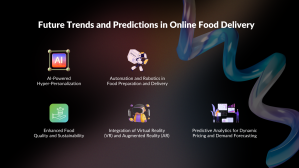
As we look ahead to the future of online food delivery, it’s clear that AI will continue to play a pivotal role in shaping the industry. Here are some speculations and predictions on the future landscape of online food delivery and the role of AI:
1. AI-Powered Hyper-Personalization
The future of online food delivery will see a shift towards hyper-personalized experiences driven by AI algorithms. These algorithms will analyze vast amounts of data, including user preferences, dietary restrictions, past orders, and even contextual factors like location and time of day, to offer highly tailored recommendations and suggestions to each individual user.
2. Automation and Robotics in Food Preparation and Delivery
Advancements in robotics and automation technologies will revolutionize food preparation and delivery processes. We can expect to see the widespread adoption of robotic kitchens and automated delivery vehicles, such as drones and autonomous robots, to streamline operations, reduce costs, and improve efficiency.
3. Enhanced Food Quality and Sustainability
AI-powered technologies will enable food delivery platforms to focus on enhancing food quality and sustainability. From optimizing supply chains and reducing food waste to offering eco-friendly packaging options and promoting locally sourced ingredients, businesses will prioritize sustainability initiatives to meet the growing demand for environmentally conscious dining options.
4. Integration of Virtual Reality (VR) and Augmented Reality (AR)
The integration of VR and AR technologies will transform the online food ordering experience, allowing users to virtually explore restaurant interiors, interact with menu items in 3D, and even visualize their meals before placing orders. This immersive experience will enhance engagement and help users make more informed decisions.
5. Predictive Analytics for Dynamic Pricing and Demand Forecasting
Predictive analytics will play a crucial role in dynamic pricing strategies and demand forecasting. AI algorithms will analyze historical data, market trends, and external factors to dynamically adjust menu prices in real-time based on demand, supply, and other variables. This will enable businesses to optimize revenue and maximize profitability.
Insights into How Businesses Can Stay Ahead
To stay ahead of the curve and thrive in the future of online food delivery, businesses must embrace emerging technologies and consumer trends. Here are some insights on how businesses can position themselves for success
- Invest in AI and data analytics capabilities to gain actionable insights into customer behavior, preferences, and market trends.
- Experiment with new technologies such as robotics, automation, VR, and AR to enhance operational efficiency and customer experience.
- Prioritize sustainability initiatives and eco-friendly practices to meet the growing demand for environmentally conscious dining options.
- Foster innovation and agility within your organization to adapt to changing consumer preferences and market dynamics quickly.
- Build strong partnerships with suppliers, restaurants, and technology providers to create a seamless and integrated food delivery ecosystem.
- Focus on continuous improvement and customer-centricity, actively soliciting feedback and iterating on your offerings to meet evolving customer needs and expectations.
By embracing these strategies and staying at the forefront of technological advancements, businesses can position themselves as leaders in the future of online food delivery, delivering unparalleled value and experiences to their customers.
Finding The Right Partner to Create a Food Delivery App
Looking ahead, the future of online food delivery is bright, driven by the transformative capabilities of AI. Businesses must harness AI’s power to create a future where ordering food isn’t just a transaction, but an enriching experience for customers worldwide.
To achieve this, it’s crucial to emphasize the importance of partnering with the right food delivery app development company. Collaboration with an experienced partner can bring your vision to life and ensure the success of your venture. They offer expertise in AI technologies, industry best practices, and innovative solutions, guiding you through every step of the process.
InfoStride, a leading IT consulting firm based in the US, specializes in building robust, sustainable, and transformative IT solutions for clients across sectors. With a proven track record of delivering cutting-edge technology solutions and a commitment to excellence, InfoStride is poised to support businesses in developing their online food delivery apps.
Whether it’s optimizing AI algorithms, designing intuitive interfaces, or implementing scalable infrastructure, InfoStride provides the insights, resources, and support needed for success. In conclusion, partnering with the right development company, such as InfoStride, is crucial for realizing the full potential of AI development services in food delivery apps. Together, we can create a food delivery app solution that redefines the future of food delivery and delivers unparalleled value to users worldwide.
Frequently Asked Questions
1. How can AI enhance a food delivery app?
AI plays a crucial role in optimizing various aspects of a food delivery app. It enables personalized recommendations based on user preferences, streamlines delivery logistics through route optimization algorithms, and enhances customer service with AI-powered chatbots.
2. What are the key steps to create a food delivery app?
To create a food delivery app, the key steps include conducting market research, defining your unique value proposition, choosing the right technology stack, developing essential features such as user registration, menu browsing, payment processing, order tracking, and customer support, and finally, launching and marketing the app.
3. How much does Food Delivery App Development Cost?
The food delivery app development cost varies depending on factors such as the complexity of features, the technology stack used, development time, and location of the development team. On average, the cost can range from $20,000 to $100,000 or more.
4. How does on-demand food delivery app development benefit businesses?
On-demand food delivery app development allows businesses to reach a wider audience, increase operational efficiency, and offer convenience to customers. By leveraging AI in food delivery apps, businesses can enhance user experience, optimize delivery routes, and gain valuable insights into customer preferences.
5. What are the key considerations when building a food delivery app?
When building a food delivery app, it’s essential to focus on user experience, security, scalability, and integration of AI technologies. Additionally, businesses should consider market trends, competition, and regulatory compliance to ensure the success and sustainability of their app.
